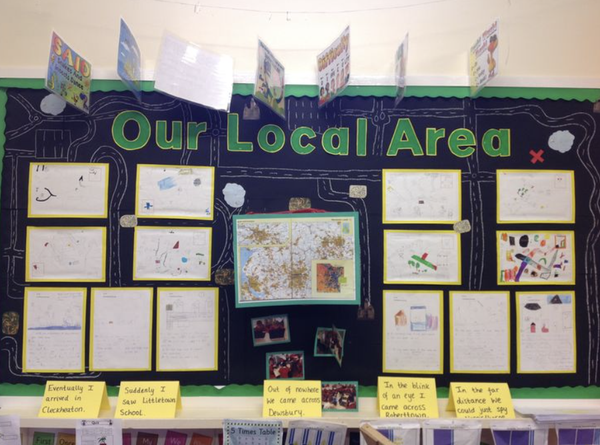This week, an activity that combines philosophy and debating and can be enjoyed by all ages. It’s inspired by something Tom planned at a school last week and has a dose of something we sent out in 2016.
What Should Make It Onto a Map?
A common topic in schools is the local area and this involves looking at maps. As well as a chance to learn map-skills, this opens up a great opportunity to discuss questions about importance, history and heritage.

Stimulus:
You have been approached by the local council to design a new map for your local area. No map can show everything, so decisions must be made about what makes it on. The natural landscape is an automatic pick, so what next? Herein lies the challenge.
Get them to list as many amenities, landmarks and human-made features as you can, in small groups. Compile these onto the main classroom board or screen.
As a whole class, pick out those which get a consensus yes (the no brainers). These might be be things like roads, houses and hospitals. Remind the class that they’re making these decisions at the age they are now. This will hopefully prevent them from just parroting what they think grown-ups will want, and will also open up the extension activity at the end.
This will leave you with features whose inclusion will need some justification. These might be things like shops, historical landmarks, or tourist attractions. Depending on how rural or urban your area is, pick a limit that is fewer than than the “candidates” remaining on the board.
Now, split the class into groups and assign each a feature that they must argue for. It now becomes a kind of “balloon debate” where each group can prepare a case and present it to the rest of the class. You’ve probably heard of this format, but here’s a quick recap:
Round 1: Cases
Each group makes a positive case for why their feature deserves to be on the map.
Round 2: Throwing Shade
An opportunity to challenge the claims or merit or other personalities (invite challenges to each speaker in turn, so that everyone has the chance to rebut something). Audience can join in with this.
Round 3: Alliances
Participants can propose alliances with others, based on some shared interest or characteristic. Of course, it’s a secret vote, so there’s no certainty these alliances are binding!
Round 4: Slogans
A chance for a final, punchy phrase to clinch the votes.
Round 5: Voting
All (participants and any non-participating audience members) vote for two features each, other than themselves. The votes are counted and the top x number (depending on your chosen liimit) make it onto the map!
Whether you choose to then make the map is up to you! This whole exercise could air the reasons for each feature, for each child to make their own decisions as to what makes it onto theirs.
Further activity:
“Close your eyes. As I count up, imagine yourself at that age… 10,11,12…19. Now open your eyes. What would you want to be on your map now?” Stop again at 30, 50, 70. The ensuing discussions, looking at what people think should be on the map at different ages, are a great way of exploring stereotypes, assumptions and how priorities and values change over time.
You can get more debating resources at our new platform www.debateplanet.co.uk, which gives schools everything they need ro run an inclusive debating club.

Best wishes,
Tom and Jason